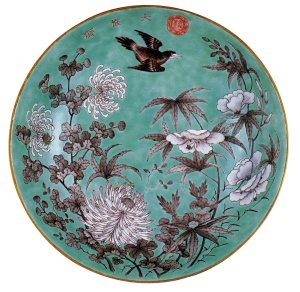 Dayazhai plate in the Gugong Museum showing the ‘Autumn’ pattern, from the GUANYANG YUCI (Gugong Museum Book)
Dayazhai plate in the Gugong Museum showing the ‘Autumn’ pattern, from the GUANYANG YUCI (Gugong Museum Book)
Dayazhai (大雅齋) Porcelains: A Brief Outline
This pattern and its derivatives have been well outlined by the collector and scholar Dr R. Longsdorf in a series of articles in the ‘Orientations’ magazine and in the book ‘The Great Fortune’ (See Bibliography). In 2007 a book was produced in China showing invaluable documents from the Gugong Museum (at the Imperial Palace), in Beijing, China. The museum retains the original illustrations which were drawn, annotated, and used as the templates for many Imperial porcelains of the Late Qing era, and had never been published before. These exquisite ‘cartoons’ are reproduced in the book, along with examples, where possible, of the actual porcelains made from these templates, also held in the Imperial Palace Museum. This is an authoritative resource indeed! Unfortunately I cannot read Chinese and it may take some months/years to translate the associated text, but others have been able to give some general ideas about its contents. The Gugong Museum book apparently states that these Dayazhai marked wares were made in the early 1870’s for the restoration of Yuan Ming Yuan Summer Palace and overseen by the Tongzhi Emperor. When the restoration project did not go ahead due to soaring costs in a difficult social and political climate, the porcelains were, in the main, stockpiled in Beijing, in the Forbidden City. (THIS NEEDS TO BE further UPDATED WITH INFORMATION FROM THE GUGONG MUSEUM BOOK, once translated). Although most of the examples in the Gugong Museum are in expectedly pristine condition there are some which have been used extensively and show this by rubbed enamel surfaces…..
Anyway, according to Longsdorf, the Dayazhai pattern consists of 5 different designs, apparently 2 for Spring and one each for the other seasons of Summer, Autumn and Winter. Each piece has a set of iron red kaishu marks which immediately make it ‘Dayazhai’: Under the rim, Chinese characters ‘Da’ ‘Ya’ ‘Zhai’, meaning ‘Abode of Great Refinement’; adjacent to these characters an oval panel with the characters ‘tian di yi jia chun’, meaning ‘Heaven and earth are united in Spring’ and the panel encircled with two tiny dragons; the base mark ‘yong qing chang chun’, meaning ‘Eternal prosperity and enduring Spring’, this last probably referring to an Imperial Hall of the same name where Cixi resided for a time in the Forbidden City.
Left: ‘Yong Qng Chang Chun’ base mark; Right: ‘Da Ya Zhai’ mark plus the oval panel bearing 2 opposing dragons encircling the characters ‘tian di yi jia chun’, also from the GUANYANG YUCI (Gugong Museum Book)
The Gugong (Palace) Museum book (2007) shows these 5 designs, plus a considerable number of other beautiful floral and bird patterns, all with a Dayazhai mark, so there will no doubt have to be amendments to the Dayazhai pantheon. However, I think it still stands that there were only five main patterns, as outlined below, which were used on a full range of shapes. The extra patterns appear only on jardinieres, pots and bulb trays.
Almost 5000 Dayazhai pieces were actually made, this is contrary to earlier predictions of there being very few pieces made. However, I have yet to determine how many are still within the Gugong Museum and Imperial Palace collections (some sources say more than 200 pieces) and what proportion are of the five patterns versus the narcissus trays, jardinières and large fish pots. Certainly very few remain outside the Imperial Palace today – they reside in Museums in Taiwan and around the world and in a very few private collections – I have just read from Gugong Museum sources that many examples were distributed to provincial and other museums within China. Apparently in the Gugong Museum book the actual numbers of each pattern ordered appears in a list next to the paper cartoon – but I have not had these translated yet!
In the following list I have summed up all known examples as given by Longsdorf and added up all the pieces shown in Gugong Museum book – any other examples will be held in the Gugong Museum/Imperial Palace. So they are still very rare objects – all other porcelain items with this design are therefore derivatives and/or copies.
The five patterns are outlined below: the images to show these patterns are from the Gugong Museum book and I have used the Zhadou shape because it is the only one which has an example from all the five patterns. The beautifully rendered paintings used as templates for the porcelains are adjacent:
1. Turquoise ground, overglaze famille rose pattern of roses and wisteria, with a Hwamie bird amongst the branches – SPRING – three pieces known in private collections, one in the Musee Guimet in Paris, two in the National Gallery of Victoria, Australia, one in the National Palace Museum, Taipei and at least seven in the Gugong Museum.
2. Yellow ground, with opaque white peonies in full flower and bud, and insects (moths) and leaves in grisaille – SPRING – three pieces known in museums/collections in the west plus at least six in the Gugong Museum.
3. White ground, natural lotus flower and leaves, with herons – SUMMER – three pieces known in the British Museum, at least six in the Gugong Museum.
4. Turquoise ground, with opaque white chrysanthemum and hibiscus flowers, leaves and foliage in grisaille, one flying blackish bird – AUTUMN – one example known in a private collection in the west, at least 8 pieces in the Gugong Museum.
5. Purple ground, with purple, pink and yellow poppies and buds and possibly peach flowers (or single multiflora tiny rose or even a single spiraea) and grey-green foliage in polychrome enamels, and a black & white bird in flight – WINTER – three pieces known in private collections, one piece in the National Palace Museum in Taipei and at least seven pieces in the Gugong Museum.
Eight shapes or forms were originally made for each season, bowls, dishes, ‘zhadou’ (spittoons?), covered food boxes, and large fish bowls. Not all of these shapes are known to still exist.
It is apparent from the GugongMuseum archives that a large number of associated patterns were also used to decorate porcelains, mainly jardinieres but also large fish pots. In addition, narcissus or bulb trays were produced in some number and they are outlined further on within this section.
Additional new patterns used mainly on jardinieres and large fish pots had the following decorations (for images see Bibliography) :-
- Turquoise ground, peach branches in blossom as well as in fruit, lingzhi fungus, narcissus bulbs in flower, key fret on large fish round pot
- Purple ground, large perched parrot in blue or green and white, peach branches in blossom as well as fruit, rectangular shape, straight sides
- Yellow ground, prunus branches in flower, pair of perched crested and long tailed birds all in grisaille, rectangular shape, straight sides
- White ground, pink, mauve and yellow peonies in full flower, occasional bud and foliage, branches with multicoloured buds, flying and perched swallows in blue-green and white, rectangular shape, straight sides
- Yellow ground, white magnolia branches in flower; very large pink blossom flower (a single rose, white centre, pink edges – Rosa Chinensis ?) on branches, buzzing bee-like insects, circular shape with everted rim, blue & white key fret
- Same as above, but white ground, and all decoration in grisaille, same shape, blue & white key fret.
- Purple or white ground, cerise single camellia branches and leaves, small yellow blossom branches, grey & black bird, yellow beak. Circular shape with everted rim, blue & white key fret
Dayazhai Narcissus Trays …………………… as outlined by Longsdorf
- Pale green or deep blue ground, camellia branches in flower (red only) and yellow blossom and branches and brown and white swallow-like bird. Five lobed shape, blue & white key fret border.
- Deep blue ground, double cherry blossoms and buds on leafy branches with butterflies. Fan shape, blue & white key fret.
- White ground, blue bindweed (Morning Glory vine) – no mention of the autumn leafed branches which may appear on the non- photographed side of the tray. Oval shape, blue & white key fret border.
- Yellow ground, lotus flowers and leaves and a dragonfly. Round shape, blue & white key fret border.
- Yellow ground, small blue star like flowers, pink flowered plant and other flowers. Quatrefoil lobed shape, blue and white key fret border.
- Yellow ground, purple wisteria flowers on branches. Double lobed shape, blue and white key fret border.
Dayazhai Narcissus Trays …………………… as outlined by the Gugong Museum – with several of these patterns only the original ‘cartoon’ is reproduced in the book, suggesting that no actual porcelain examples exist.
- Deep blue ground, camellia branches in flower (red only) and yellow blossom and branches and brown and white swallow-like bird. Five lobed shape, blue & white key fret border.
- Coral red ground, blue bindweed (Ipomoea – Morning Glory), autumn leafed branches. Oval shape, blue & white key fret border.
- White ground, double pink blossom (cherry?) branches with leaves and butterflies. Fan shape, blue & white key fret border.
- Deep blue ground, wisteria branches and flower, grasses in grisaille, white herons, flying and wading. Lozenge shape, blue & white key fret border.
- White ground (? – no actual example in porcelain), yellow hibiscus, pink and purple chrysanthemum, small blue daisies, 3 buzzing bees. Double axehead shape.
- No discernible ground colour (as above, no porcelain example), large poppy flower and many buds, plus foliage and perhaps another chrysanthemum like flower, all in a sepia grisaille. Hexagonal shape.
- Lime green or mid blue ground, pink and pure white lotus flowers and leaves, a dragonfly in flight. Oval shape, blue & white key fret border.
Marks and statistics: I have described the marks above because, in this unique case, they are actually integral to the design. If all three sets of marks are not present then the piece cannot even begin to be Dayazhai.
Development of the pattern to present day: The Dayazhai pattern is therefore quite distinct and should incorporate all of the decorative elements outlined at the beginning if it is to qualify as a Dayazhai piece. As Longdorf discusses in “The Great Fortune” book many derivative patterns, copies and fakes were also made in private kilns during the later Qing and early 20th century and then again up to the present day. It would appear also that the dayazhai wares were reordered, and in these cases certain elements and marks were discarded, colours and colour combinations were modified, and a litany of new shapes appeared. By far the most copied were those with turquoise ground. From the late 20th century to today, a range of copies are being made of all the patterns and their derivatives.
So, how does one deal with the huge number of derivatives, copies and recent fakes? In the absence of other markers like inscriptions one can really only assess these on two main counts –
- Quality of the painting and decoration regardless of its likeness to the original
- Quality of the painting and decoration and likeness to the original, very precisely ordained patterns
Looking at all these derivatives one can start to group them according to the layout of the pattern, extra elements such as playing dragons, new border innovations, presence or absence of marks – it goes on and on. But that is really another story. The fact still remains that 99.99999999% of Dayazhai decorated pieces that we may see in the public arena are derivatives and copies, some are as beautiful and enigmatic as the originals, perhaps even more so……
Michaela
Bibliography:
- Dayazhai Ware: Porcelain of the Empress Dowager 1992 By Ronald W. Longsdorf Orientations March 1992 pp 45-56
- The Great Fortune, Chinese & Japanese Porcelain of the 19th and 20th centuries & their forerunners, from the Weishaupt Collection 2002 ISBN 3-00-010306-6 Ed. George Weishaupt
- Gugong Museum: GUANYANG YUCI: GUGONG BOWUYUAN CANG QINGDAI ZHI CI GUANYANG YU YUYAO CIQI. (Official Designs for Imperial Porcelains: Qing Dynasty Official Designs for the Manufacture of Porcelain and Imperial Ceramics in the Collection of the Gugong Museum). Beijing, 2007 ISBN 978-7-80047-638-9. The Forbidden City Publishing House, 335 pp.
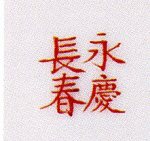

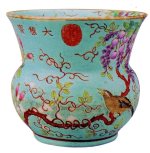
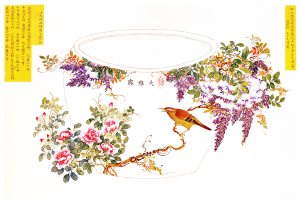
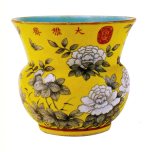
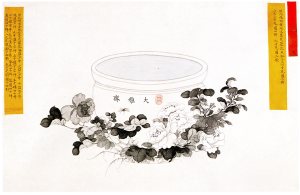
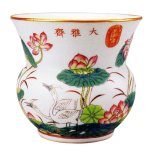
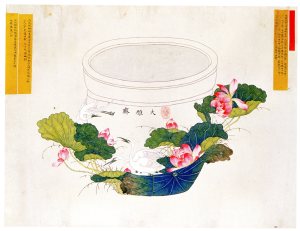
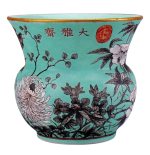
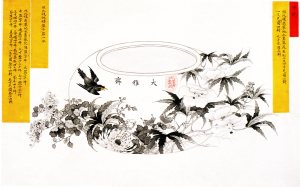
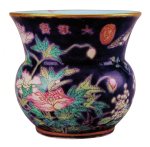
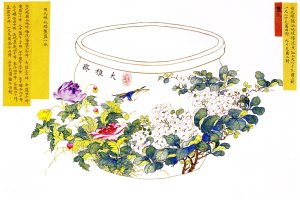
Please continue writing this blog. It is a great scholarly source.
Good reference write up. I have a few questions and hopefully you
could contact me by email. Thank you.
Dear Michaela, recently one auction house has sold Dayazhai porcelain bowl, spring version with turquoise ground. Obviously, not properly described. I have pictures saved, can send you if you didn’t see it. Best regards, Lysander
Thank you Lysander! Quite often the top quality derivative patterns are sold by the auction houses. Some are extremely well painted, equivalent to the originals. Others, not so good. In these cases one needs to to inspect closely, not just relying on photos. Thanks again for letting me know, I will check it out…..